Primrose is a beautiful and popular flower perfect for adding color to any garden. They are relatively easy to grow and care for, making them a great choice for beginner gardeners. With some basic knowledge, anyone can successfully grow Primrose in their backyard.
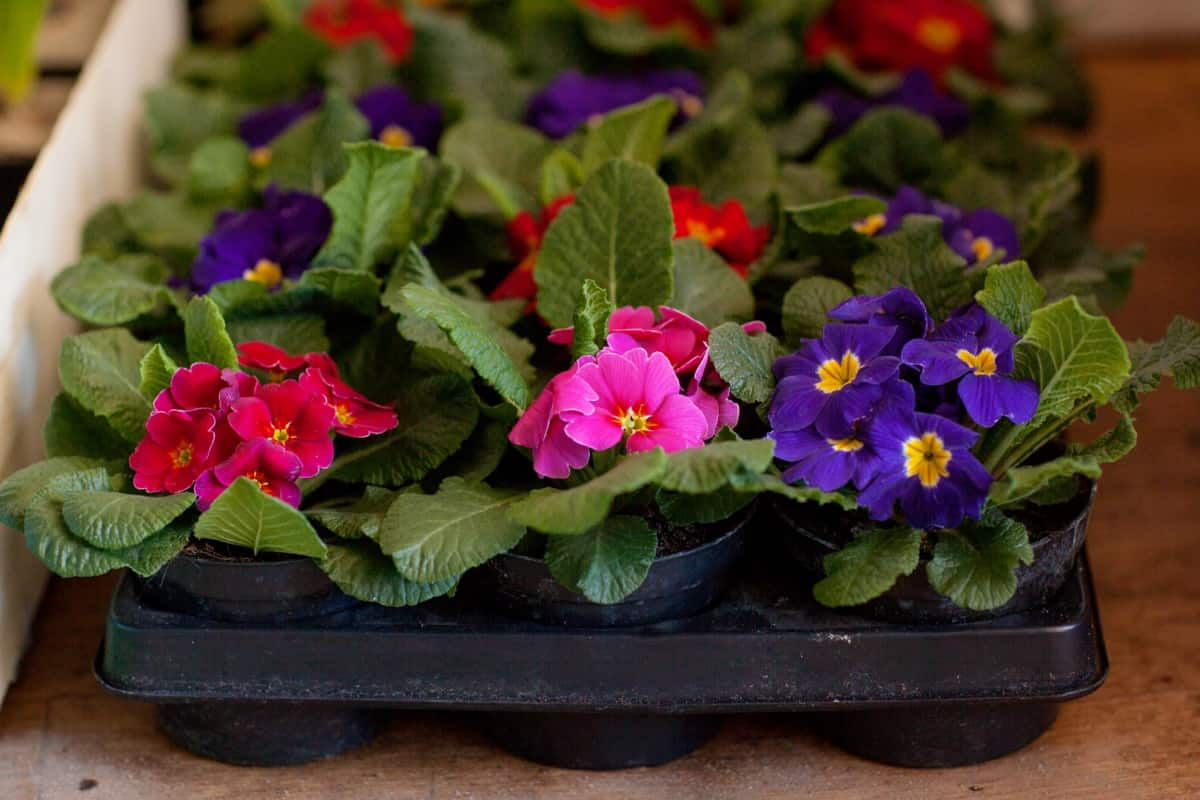
The Primrose plant grows to 1 to 2 feet tall, with a rosette of leaves at the base and a stem bearing a loose raceme of yellow, pink, or white flowers. The flowers are 1–2 inches in diameter, with five petals. The fruit is a capsule containing several seeds. With a little bit of care, you can enjoy these lovely flowers for many seasons to come.
How to Grow and Care for Primrose in the Backyard
Types of Primrose
Candelabra – When it comes to Primrose, there are many different types to choose from. One type is the candelabra Primrose. As its name suggests, this type of Primrose has a candelabra-like shape with flowers that bloom in a cluster at the end of each stem. Candelabra Primrose comes in various colors, including pink, white, purple, and yellow.
Common Cowslip – Cowslips are one of the most common Primrose species. Cowslips are herbaceous perennials that grow 11 to 30 inches tall. The flowers are yellow, with five petals, each 2-3 inches long. The fruit is a dry capsule that contains numerous small seeds.
English Cowslip – The English cowslip is a beautiful yellow flower. It is a member of the Primrose family and has a sweet, honey-like scent.
Evening Primrose – Evening Primrose is a beautiful flower that blooms in the evening hours. The petals are usually white or yellow and have a sweet fragrance.
Francesca – Francesca is a Primrose characterized by its frilly, bright yellow flowers. Francesca grows best in full sun to partial shade and prefers moist, well-drained soils. This plant will spread rapidly via rhizomes, so it is best suited for use in areas where it can be controlled.
In case you missed it: How to Make Grass Clippings Compost Fertilizer: Homemade Recipe, DIY for Container, Indoor, and Backyard Garden Plants

Giant Cowslip – The plant grows about 1-2 feet tall and has large, yellow flowers about 2-3 inches in diameter. The leaves are dark green and have a leathery texture.
Japanese Primrose – It is a popular ornamental plant often grown in gardens. The pink, white, or purple flowers bloom in late spring or early summer. The plant prefers moist, shady locations and will not tolerate full sun.
Juliana – Juliana is a Primrose type with beautiful, large yellow flowers. Juliana plants grow about 12 inches tall and make great additions to any garden.
Kisoana – The plant has large, dark green leaves and white or pink flowers. The flowers have five petals about 2-3 inches in diameter. Kisoana blooms in late spring or early summer.
Climate Suitable for Growing Primrose in the Backyard
When it comes to climate, Primrose is pretty versatile. They can survive in hot and cold climates as long as they can access moisture. Primrose generally prefers cooler temperatures and will go dormant in the summer heat. If you have a hot climate and want to grow Primrose in your backyard, plant them in a shady spot that stays cool and moist. Sunlight is one of the garden’s most important requirements for growing Primrose.
In case you missed it: 45 Key Rules for Backyard Gardening: From Planning to Reducing Production Cost
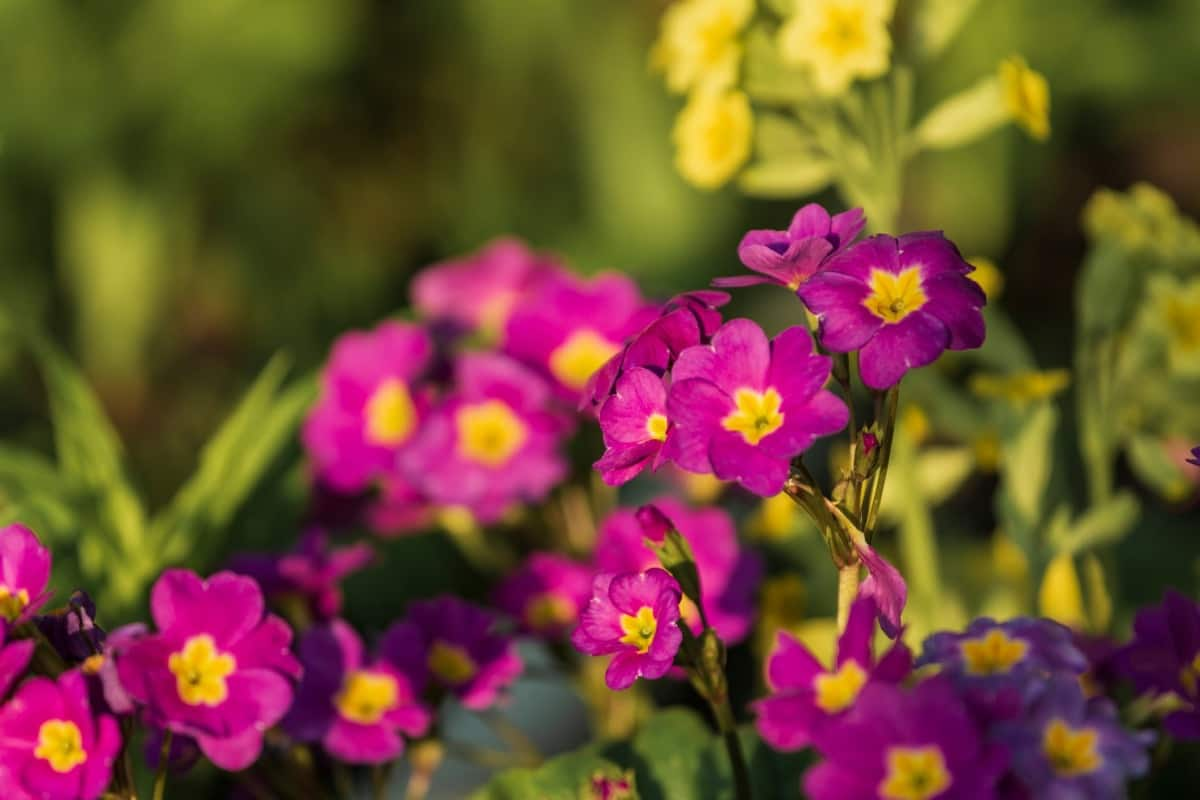
Primrose needs at least six hours of sunlight daily and prefers a spot that receives full sun to partial shade. If you live in an area with hot summers, it’s best to plant Primrose in an area with morning sun and afternoon shade. To ensure your Primrose plants thrive, providing the correct temperature is important. They prefer cooler weather and will do best in temperatures between 16 to 21°C. If the temperature gets too hot, they will start to wilt. However, they can tolerate light frosts.
Soil Requirement for Growing Primrose in the Backyard
The plant has a wide range of soil requirements but prefers an acidic to neutral pH level with good drainage. The ideal soil mixture for Primrose is two parts loam and one part sand. If you have heavy clay soil, mixing sand or organic matter will help improve drainage. Primrose prefers slightly acidic soil with a pH of 6.0 to 7.0.
To prepare the bed, loosen the soil to a depth of 12 inches and mix in 2 to 4 inches of organic matter, such as compost or aged manure. Once the bed is prepared, you can plant your Primrose. Space plants 10 to 12 inches apart, depending on the variety. Gently firm the soil around each plant and water the well.
Water Requirement for Growing Primrose in the Backyard
Primrose needs moist soil to grow and prosper. Supplemental watering may be necessary to keep the soil moist depending on the climate, rainfall, and season. When watering, be sure to water at ground level and not from above to avoid wetting the leaves. Primrose needs moist but well-drained soil to thrive.
In case you missed it: How to Grow Love-in-a-mist in Your Backyard: At Home, Soil, Propagation, Planting, and Care
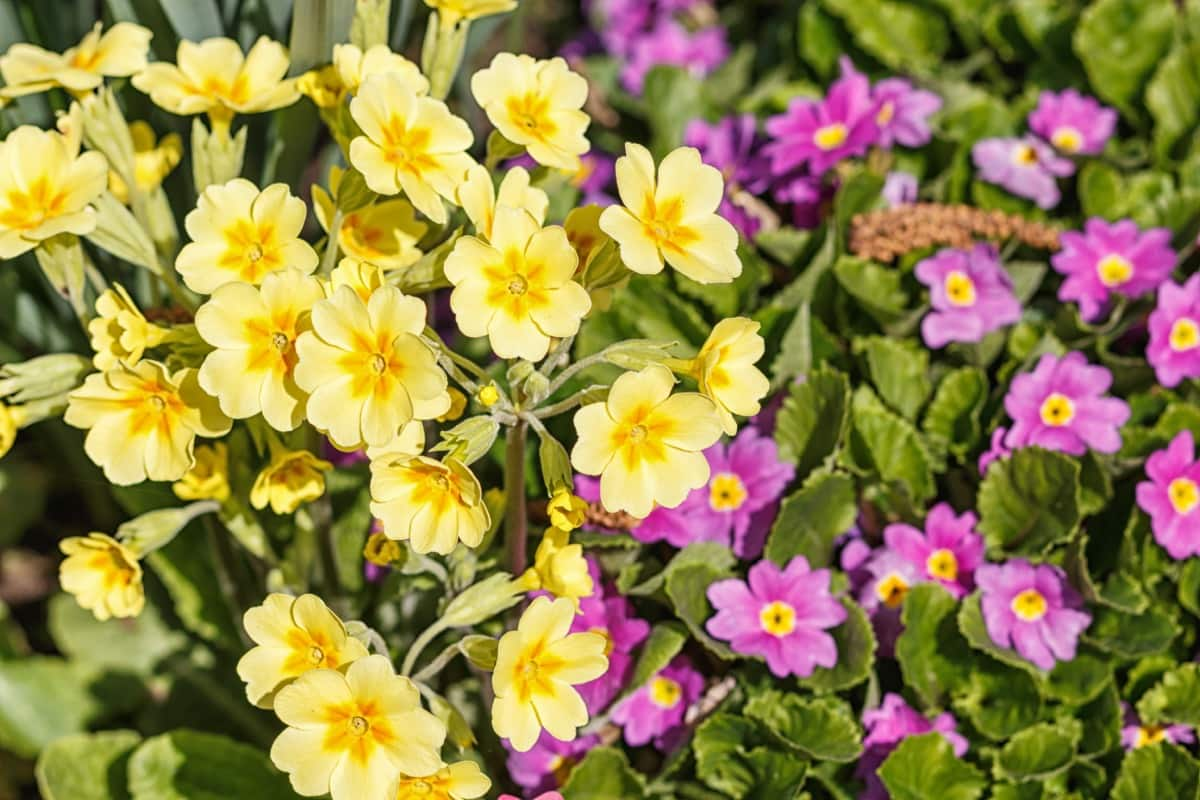
Mix sand, organic matter, and peat moss into your garden bed before planting. It’s also important to keep the soil evenly moist throughout the growing season, typically from early spring to late fall. Water your Primrose plants deeply about once a week or more often if the weather is hot and dry.
Propagating Primrose
Form Seed
Fill a seed flat or tray with peat moss, perlite, and vermiculite to propagate Primrose from the seed, then water it until it is evenly moist. Next, sprinkle the Primrose seeds over the mixture and lightly press them in. Cover the tray with plastic wrap or a lid, and set it in a location that receives indirect sunlight. Keep the mix moist by misting it with water every day. Once the seeds have germinated (in 10-14 days), remove the cover and move the tray to a sunny spot.
Allow them to grow for another month or two before moving them outdoors. When it comes time to transplant your Primrose seedlings, handle them carefully. Gently loosen the soil around the plant, not damaging the roots. Carefully lift the plant from the ground and replant it in a new location. Water well and keep an eye on the plant for the next few days to ensure it adjusts well to its new home.
Primrose Plant Care
Fertilizer Requirement for Growing Primrose in the Backyard
Primrose is a relatively low-maintenance plant that requires some basic care to thrive. One important aspect of caring for Primrose is ensuring it gets the right fertilizer. The best time to fertilize Primrose is in the spring, just as new growth begins. A slow-release fertilizer or a balanced liquid fertilizer can be used.
In case you missed it: How to Grow Hostas in Your Backyard: Soil, Propagation, Planting, and Care
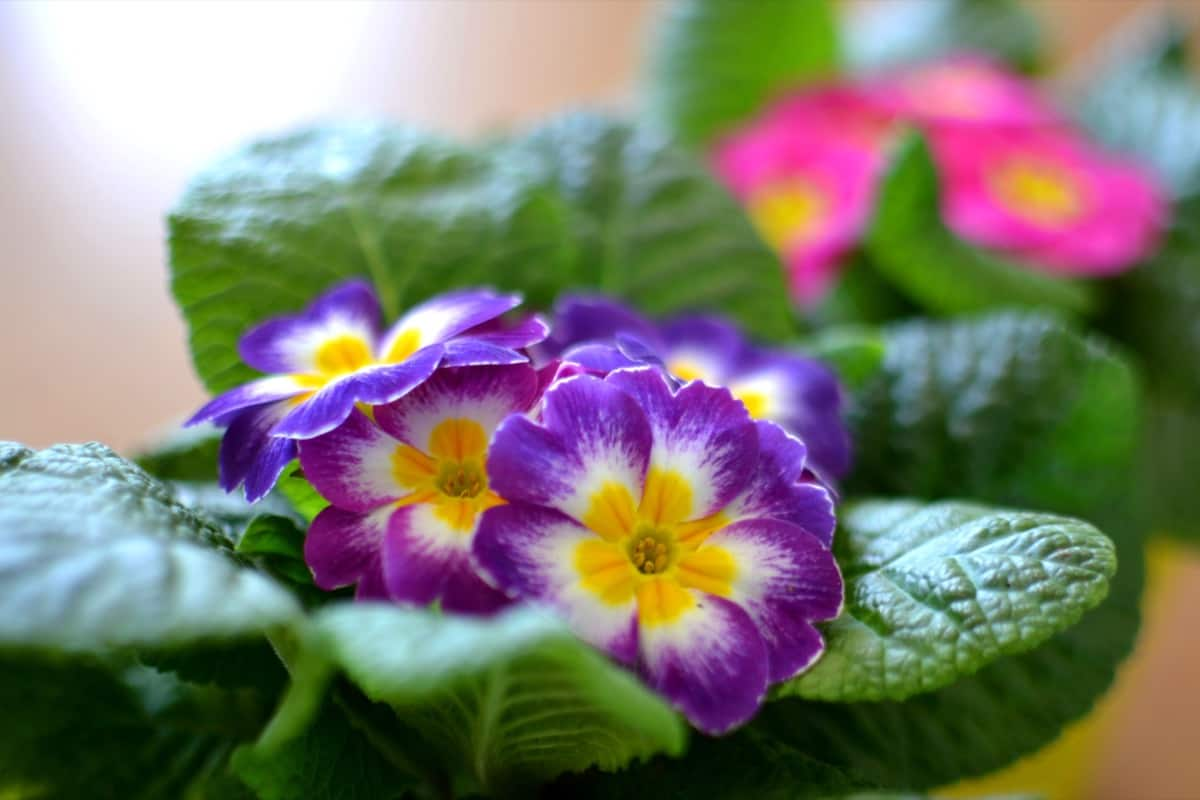
You should follow the directions on the fertilizer packaging, as too much fertilizer can damage the plant. If your Primrose plants are not looking their best, they may need a little boost in additional fertilizer. Yellowing leaves can indicate a lack of nutrients, so fertilizer can help plants recover. It’s important not to overdo it with fertilization, however. Too much fertilizer can burn the plants, so always be cautious when applying it.
Pruning Primrose Plant
If you have a Primrose plant that is starting to look overgrown, you may wonder when and how to prune it. Pruning Primrose plants are simple and can be done in early spring or late fall. When pruning your Primrose plant, the most important thing to remember is to never cut more than one-third of the plant at a time. This will help ensure that your plant remains healthy and continues to bloom abundantly.
Look at the plant and identify any dead or dying stems. These can be cut away at the base, near the soil line. Next, look for any stems crossing or rubbing against each other – these can also be trimmed away. Finally, you can trim back any long stems to promote bushier growth. When trimming back stems, always make sure to use sharp shears or scissors so that you get a clean cut.
Primrose Plant Care in Winter
Primrose plants tend to go dormant in the winter, so they won’t need as much water as they do during the growing season. However, they will still need some water to prevent them from drying out. Water them once a week, ensuring the soil is moist but not soggy. If you have gotten cold in the winter, moving your Primrose plants indoors is best.
Place them in a sunny spot near a window and water them as needed. If your area is prone to frost, you must take extra precautions to ensure your Primrose plants aren’t damaged. Cover them with a sheet or tarp when frost is forecasted, and remove it during the day so they can get some sunlight.
Pests and Diseases of Primrose and their Control
Primrose is a beautiful and popular flower often grown in the backyard. However, a few pests can cause problems for this plant. Aphids are soft-bodied insects that feed on the sap of plants. You can find on the undersides of leaves and new growth. Aphids can cause stunted growth, deformed leaves, and reduced flowering. To control aphids, you can use an insecticidal soap or neem oil.
In case you missed it: How to Grow Medicinal Plants in the Backyard: Medicinal Herb Gardening for Beginners

Spider mites are tiny spider-like creatures that feed on the underside of leaves. They can cause stippling and yellowing of the leaves and webbing. You may use insecticidal soap or neem oil to control spider mites. You can also release predatory mites into the garden to help control them. Thrips feed on the flowers and leaves of plants. They can cause deformities in flowers and leaves and reduced flowering. You must use an insecticide such as Pyrethrin to control thrips. You may also need to use a systemic insecticide if they are severely infested.
Primrose is a beautiful flowering plant commonly found in gardens and yards. However, these plants are susceptible to various diseases that can cause them to wilt, discolor, and eventually die. You should be aware of the different diseases that can affect Primrose so that you can take steps to prevent or control them. Some common diseases of Primrose include powdery mildew and rust. Powdery mildew is a fungus affecting Primrose plants’ leaves and stems.
White or gray powdery growth on the plant surfaces characterizes this disease. Powdery mildew can weaken the plant and make it more susceptible to other diseases. To prevent powdery mildew, water the plants at the base instead of from above, and avoid overhead watering if possible. If powdery mildew does appear, you can treat it with a fungicide designed for this purpose.
Rust is another fungal disease that affects Primrose plants. Rust appears as reddish-brown spots on the leaves and stems of the plant. This disease can stunt the plant’s growth and make it more vulnerable to other problems. Rust can be controlled by using a fungicide specifically designed for this disease. You should remove any affected leaves from the plant so the fungus does not spread further.
In case you missed it: How to Start Home Gardening in Hawaii for Beginners: For Indoors, Outdoors, Raised Beds, Backyards, and Containers
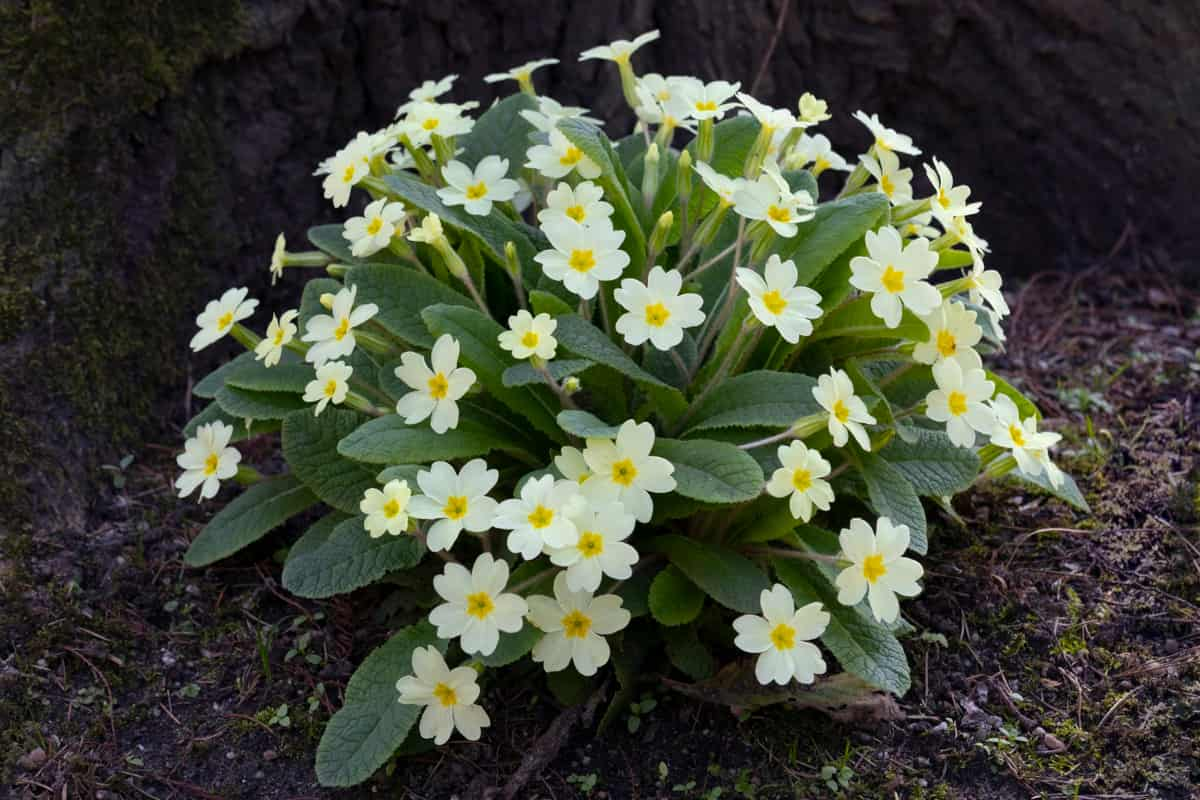
Conclusion
Regarding Primrose, there are a few things to remember for optimal growth and care. First, plant Primrose in your yard that gets plenty of sunlight. Secondly, water regularly and fertilize monthly for best results. Lastly, deadhead spent flowers to encourage new blooms. Following these simple tips, you can enjoy beautiful Primrose blooms all season.
- Broccoli Seed Germination and Selection
- Asparagus Seed Germination and Variety Selection
- Seasonal Flower Gardening: Best Practices for Spring, Summer, Fall, and Winter
- How to Grow Hibiscus from Flower
- Plantation Ideas for Home Decoration: A Beginners Guide
- Flower Garden Designs and Layouts for Beginners
- Planting and Spacing Techniques in Papaya: A Beginner’s Guide
- Growing Gold: Essential Techniques for Planting Pineapples
- How to Make Kalanchoe Plant Bushy: Home Remedies and Solutions
- 11 Reasons Why Your Gardenia is Not Blooming: Home Remedies and Solutions
- Eco Elegance: The Guide to Designing a Drought-Tolerant Landscape
- Gardening on a Slope: Strategies for Hillside Landscaping
- Nourish and Flourish: Top Organic Mulches for Thriving House Plants
- Everything You Want to Know about Indian Mogra Flower: Discover Uses and Growing
- Green Thumb Success: Expert Tips for Cultivating Greenhouse Pumpkins All Year Round
- Maximize Growth & Flavor: The Ultimate Guide to Companion Planting in Herb Gardens
- How to Control Rhododendron Problems Naturally: Home Remedies and Organic Ways to Fix Them
- Natural Magic: The Remarkable Benefits of Cinnamon for Plants
- Best Steps to Revive Dying Tulip with Natural and Organic Treatment
- 10 Reasons Why Your Angel Trumpet is Not Blooming: Remedies and Treatment
- How to Fix Periwinkle Leaf and Flower-Related Problems: Natural Remedies and Solutions
- How to Fix Zinnias Leaf and Flower Problems: Discover Natural and Home Remedies
- Organic Steps to Induce Lemon Tree Flowers: A Comprehensive Guide
- Bloom Booster: Crafting the Perfect Homemade Bougainvillea Fertilizer
- Optimizing Growth: A Guide to Applying NPK Fertilizer for Potted Plants
- 10 Best Homemade Fertilizers for Rubber Plant: DIY Recipes and Application Method
- How to Boost Female Pumpkin Flowers: Effective Steps for More Flowers and High Yields
- Transform Your Indoor Garden: Top Benefits of Pink Salt for Houseplants
- 10 Best Homemade Fertilizers for Peacock Plants (Calathea): Easy DIY Guide
- Unlock Blooms: 9 Reasons Why Your Potted Chrysanthemum is Not Blooming
- 8 Reasons Why Your Potted Hibiscus is Not Blooming: Fix it with Simple Solutions
- Unlock Blooms: 9 Key Reasons Your Potted Frangipani Won’t Flower
- 10 Reasons Why Is My Ice Plant Not Blooming: Remedies and Treatment
- 10 Reasons Why My Potted Hydrangea Not Blooming: Treatment and Remedies
- 10 Reasons Why is My Wisteria Not Blooming: Remedies and Treatment
- 10 Reasons Why is My Goldfish Plant Not Blooming: Remedies and Treatment